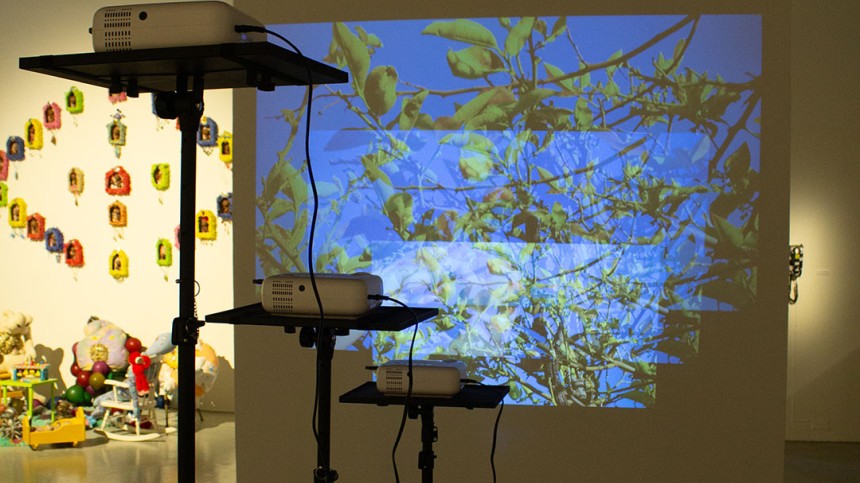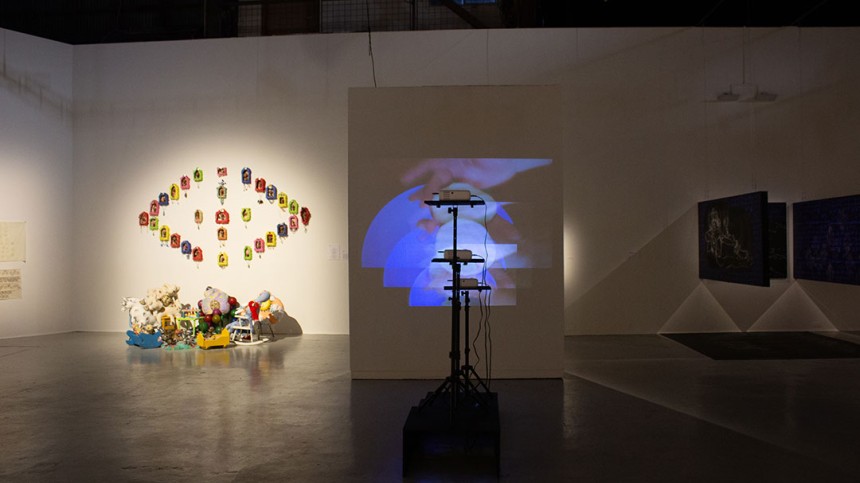Possibilities Are Endless in Visual Arts

Lucía Moreno Nava, a graduate of Pomona College in media studies, found herself drawn to the wide expanse of possibilities that are afforded with the visual arts. She attended a few art classes at local spots while holding down full-time work as an office administrator and then as a development and communications manager at West Contra Costa Public Education Fund.
It was those few classes that gave rise to the possibility of pursuing visual arts as not only a passion, but a profession. In fact, “possibility” remains a core tenant of her creative and artistic narrative.
“I’m drawn to the possibility of the visual,” Lucía expands upon. “What is possible when we question the way images are and how aesthetics help with changing minds, creating new narratives. We mess around with forms and ideas and talk about what they could mean—how the visual shapes our experience of ourselves and of our communities.
“The more I become engaged in the visual arts, the more I see the potential of connections to things that may seem to fall outside the visual or what has long been considered the fine arts, such as sound or sensation.”
Her “possible” of what could be began to turn into a “reality” by pursuing an M.F.A. at San Francisco State University—thanks to our Post-Baccalaureate Certificate in Visual Arts.
Choosing the Path
The decision to apply for—and be accepted into—our program was fueled by a desire to further hone her artistic skills. Lucía, like many students, was captivated by the program's unique offerings, especially given the flexibility it provided during the challenges posed by the COVID-19 lockdown.
“I was able to do most of my studies virtually,” Lucía adds. “This was a plus in figuring out a practice that reflected the times. My goal with completing the program was to create a more engaged art practice that would help with applying to and getting into an M.F.A. program.”
Dynamic Learning Environment
Throughout the program, Lucía found herself immersed in a dynamic learning environment. The online classroom became a space where diverse individuals from various walks of life would foster an atmosphere of excitement and genuine passion. Young professionals, those recently retired and anyone interested in creating works brought new possibilities, engaging feedback and an overall supportive vibe.
“The instructors were also very helpful in their advice and were invested in the growth of their students,” Lucía adds. “I especially enjoyed the mentorship course because I got individualized instruction that helped build a stronger portfolio.”
"Transitioning to online classes was challenging, but the instructors made sure we remained engaged. As someone working with photo and video, the online format worked well for me," Lucía acknowledges.
“The post-bacc really helped me begin to articulate what my artistic practice is and prepare a portfolio to submit for admission,” she enthuses. “The program helped me get into graduate school! Personally, I made a lot of inspiring connections with other students who were just interested in creative expression and art.”
Developing Her Portfolio Through Coursework
Digital Photography Fundamentals
Digital Photography Intermediate
Post-Baccalaureate Seminar 1: Portfolio and Visual Dynamics
Post-Baccalaureate Seminar 2: Portfolio and Critique
Post-Baccalaureate Seminar 3: Portfolio and Professional Practices
Contemporary Art: History and Theory
Collage: The Art of Sustainability
M.F.A. Within Reach
Lucía’s goal is nearing reality: She is completing her final year of studies in the two-year M.F.A. in Studio Art at San Francisco State University.
She seamlessly integrates the lessons learned in class—both from the certificate program and the M.F.A.—into her current artistic endeavors. The fundamentals instilled by digital photography instructors, particularly in workflow and file management, became foundational pillars for her ongoing artistic exploration.
Lucía continues to develop, expand and fine-tune her creative vision.
“My current work uses video to reveal the stories that have been constructed about growing up within immigrant communities,” Lucía describes. “By starting from the point of the family archive, the moving-image records of a singular family become part of a larger historical context, shaped by forces outside and within the home. Most of my work in the program has involved the use of projectors as the main source of producing the image of the video. By emphasizing the technology that makes an image possible, I acknowledge the constant presence of the image in our daily lives.
“I introduce multiple sources of video by having numerous projectors present for a piece to play with the dynamic of time and how the distance between each projection can be elongated at each playing. These multiples serve to fragment the narrative and uplift the polyphony inherent in the stories we tell and the memories we keep.”

